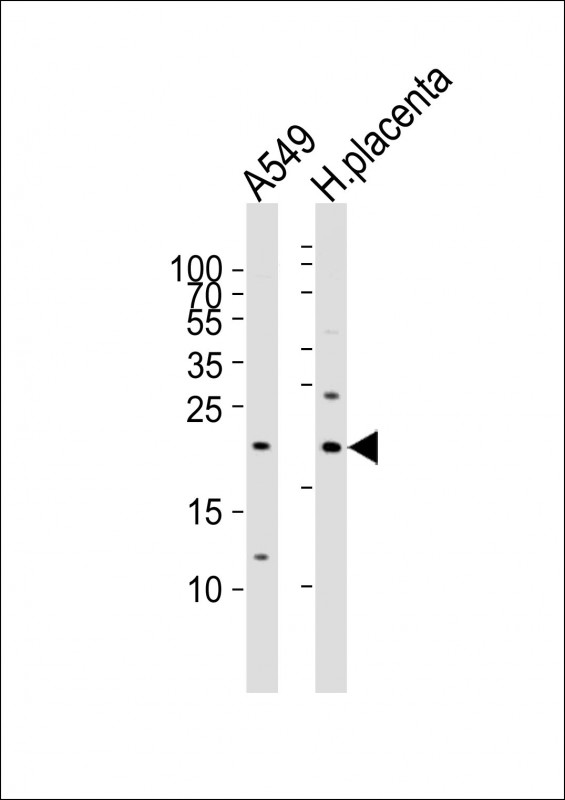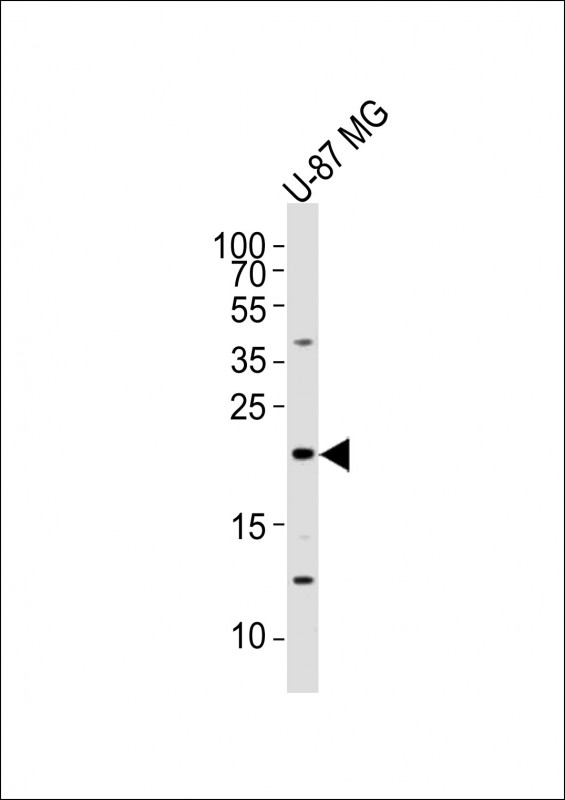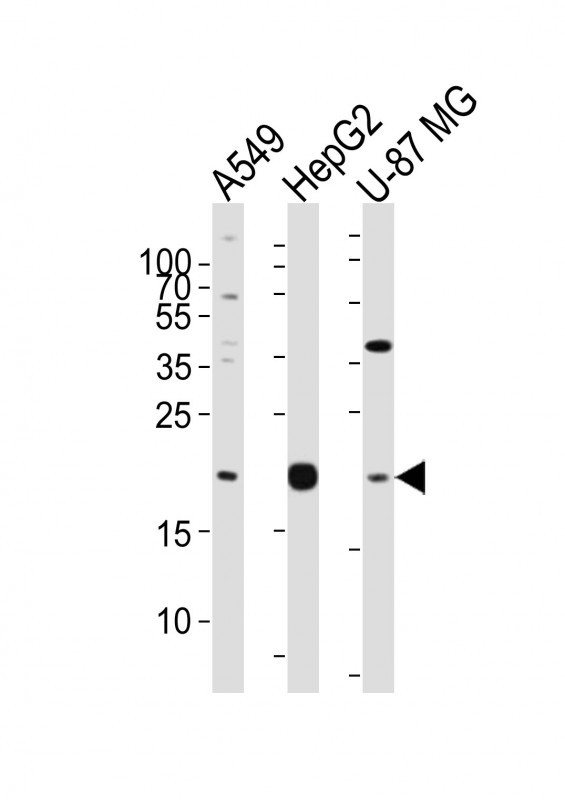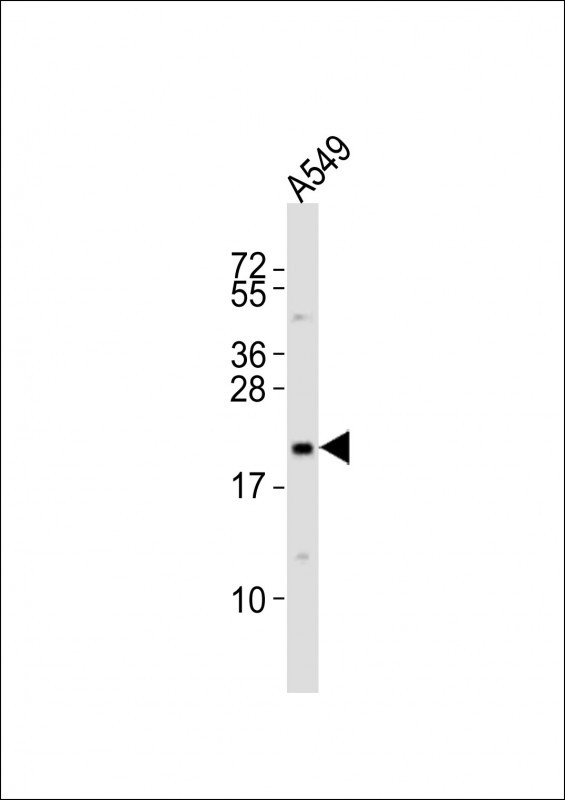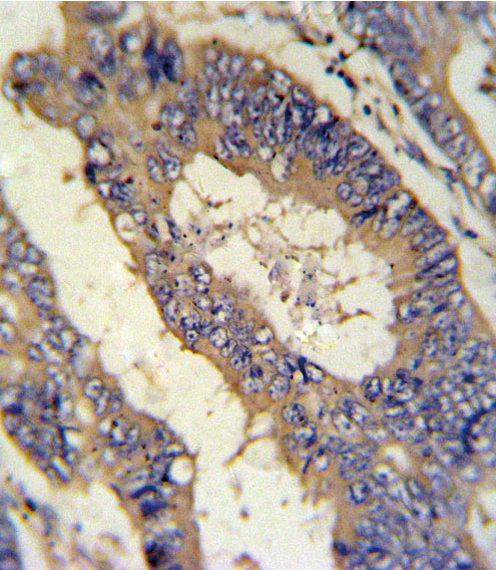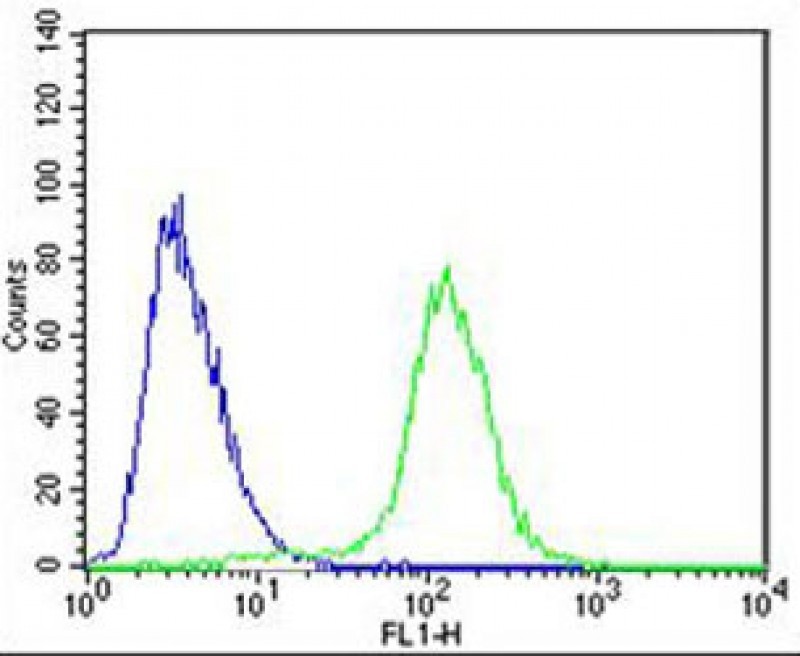EREG Antibody (C-term)
Affinity Purified Rabbit Polyclonal Antibody (Pab)
- SPECIFICATION
- CITATIONS
- PROTOCOLS
- BACKGROUND

Application
| WB, IHC-P, FC, E |
|---|---|
| Primary Accession | O14944 |
| Reactivity | Human |
| Host | Rabbit |
| Clonality | Polyclonal |
| Isotype | Rabbit IgG |
| Calculated MW | 19044 Da |
| Antigen Region | 137-165 aa |
| Gene ID | 2069 |
|---|---|
| Other Names | Proepiregulin, Epiregulin, EPR, EREG |
| Target/Specificity | This EREG antibody is generated from rabbits immunized with a KLH conjugated synthetic peptide between 137-165 amino acids from the C-terminal region of human EREG. |
| Dilution | WB~~1:1000 IHC-P~~1:10~50 FC~~1:25 E~~Use at an assay dependent concentration. |
| Format | Purified polyclonal antibody supplied in PBS with 0.09% (W/V) sodium azide. This antibody is purified through a protein A column, followed by peptide affinity purification. |
| Storage | Maintain refrigerated at 2-8°C for up to 2 weeks. For long term storage store at -20°C in small aliquots to prevent freeze-thaw cycles. |
| Precautions | EREG Antibody (C-term) is for research use only and not for use in diagnostic or therapeutic procedures. |
| Name | EREG |
|---|---|
| Function | Ligand of the EGF receptor/EGFR and ERBB4. Stimulates EGFR and ERBB4 tyrosine phosphorylation (PubMed:9419975). Contributes to inflammation, wound healing, tissue repair, and oocyte maturation by regulating angiogenesis and vascular remodeling and by stimulating cell proliferation (PubMed:24631357). |
| Cellular Location | [Epiregulin]: Secreted, extracellular space |
| Tissue Location | In normal adults, expressed predominantly in the placenta and peripheral blood leukocytes. High levels were detected in carcinomas of the bladder, lung, kidney and colon |

Thousands of laboratories across the world have published research that depended on the performance of antibodies from Abcepta to advance their research. Check out links to articles that cite our products in major peer-reviewed journals, organized by research category.
info@abcepta.com, and receive a free "I Love Antibodies" mug.
Provided below are standard protocols that you may find useful for product applications.
Background
EREG is a member of the epidermal growth factor family. EREG can function as a ligand of EGFR (epidermal growth factor receptor), as well as a ligand of most members of the ERBB (v-erb-b2 oncogene homolog) family of tyrosine-kinase receptors.
References
Ben-Ami, I., et al. Hum. Reprod. 24(1):176-184(2009)
Cho, M.C., et al. Biochem. Biophys. Res. Commun. 377(3):832-837(2008)
Lasky-Su, J., et al. Am. J. Med. Genet. B Neuropsychiatr. Genet. 147B (8), 1345-1354 (2008)
If you have used an Abcepta product and would like to share how it has performed, please click on the "Submit Review" button and provide the requested information. Our staff will examine and post your review and contact you if needed.
If you have any additional inquiries please email technical services at tech@abcepta.com.













 Foundational characteristics of cancer include proliferation, angiogenesis, migration, evasion of apoptosis, and cellular immortality. Find key markers for these cellular processes and antibodies to detect them.
Foundational characteristics of cancer include proliferation, angiogenesis, migration, evasion of apoptosis, and cellular immortality. Find key markers for these cellular processes and antibodies to detect them. The SUMOplot™ Analysis Program predicts and scores sumoylation sites in your protein. SUMOylation is a post-translational modification involved in various cellular processes, such as nuclear-cytosolic transport, transcriptional regulation, apoptosis, protein stability, response to stress, and progression through the cell cycle.
The SUMOplot™ Analysis Program predicts and scores sumoylation sites in your protein. SUMOylation is a post-translational modification involved in various cellular processes, such as nuclear-cytosolic transport, transcriptional regulation, apoptosis, protein stability, response to stress, and progression through the cell cycle. The Autophagy Receptor Motif Plotter predicts and scores autophagy receptor binding sites in your protein. Identifying proteins connected to this pathway is critical to understanding the role of autophagy in physiological as well as pathological processes such as development, differentiation, neurodegenerative diseases, stress, infection, and cancer.
The Autophagy Receptor Motif Plotter predicts and scores autophagy receptor binding sites in your protein. Identifying proteins connected to this pathway is critical to understanding the role of autophagy in physiological as well as pathological processes such as development, differentiation, neurodegenerative diseases, stress, infection, and cancer.
